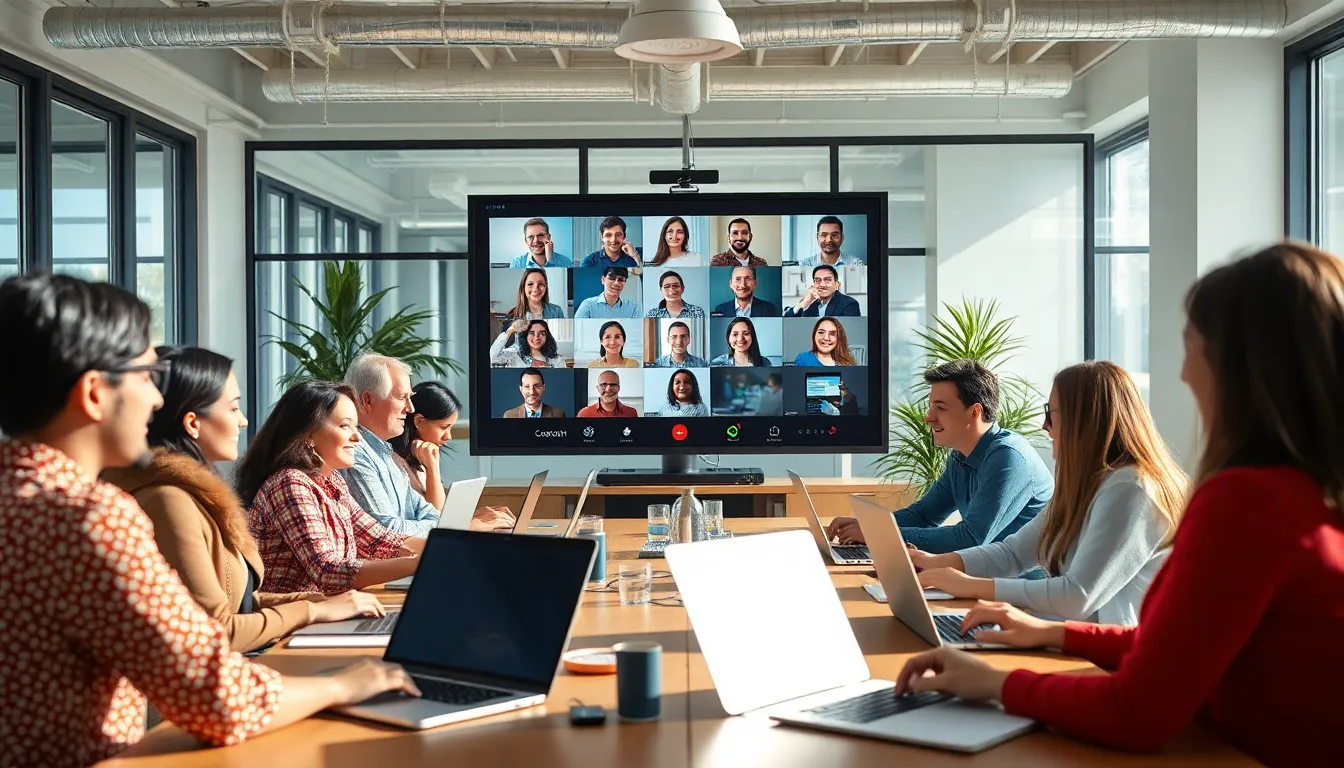Table of Contents
ToggleIn a world where software meetings can feel like a never-ending episode of a sitcom, it’s time to turn the tide. Imagine a future where every meeting is not just productive but also a little less painful. The quest to improve software meetings isn’t just a tech challenge; it’s a mission to reclaim precious time and sanity.
With the right tools and strategies, those awkward silences and tech hiccups could become relics of the past. It’s about making meetings engaging, efficient, and maybe even a bit fun. So grab your virtual notepad and get ready to explore how to transform those dreaded meetshaxs into something everyone actually looks forward to. After all, who said meetings can’t have a sprinkle of joy?
Importance Of Software Meetshaxs
Improving software meetshaxs significantly enhances collaboration among team members. These gatherings remain pivotal for achieving project objectives and driving innovation.
Enhancing Communication
Effective communication forms the backbone of any successful meetshax. Clarity in message and purpose fosters understanding among participants. Utilizing collaboration tools promotes real-time feedback. Visual aids can simplify complex concepts and keep everyone engaged. Participants feel more connected when they share their thoughts openly. Regularly scheduled check-ins ensure alignment on goals and progress. Companies that prioritize communication often see increased productivity and morale.
Streamlining Processes
Streamlined processes during meetshaxs lead to better time management. Clearly defined agendas direct discussions toward relevant topics. Setting time limits for each agenda item keeps the conversation focused. Assigning roles, such as a facilitator or note-taker, enhances accountability. Efficient follow-up on action items ensures that decisions translate into actions. Teams that adopt structured approaches often experience reduced meeting times and improved outcomes. Implementing these strategies can transform tedious meetings into efficient, goal-oriented sessions.
Current Challenges Facing Software Meetshaxs

Software meetings face numerous challenges that hinder productivity and engagement. Addressing these issues can lead to better experiences and outcomes for participants.
Technical Limitations
Technical limitations frequently disrupt software meetings. Connectivity issues often arise, impacting audio and video quality. Many participants experience difficulty accessing necessary features, which detracts from overall effectiveness. Outdated hardware or software can further complicate interactions. Some tools lack integration with commonly used platforms, forcing users to switch applications mid-meeting. Frequent updates can confuse attendees, leading to hindered communication. Ultimately, these setbacks contribute to frustration and reduced engagement among team members.
User Experience Issues
User experience issues present significant barriers in software meetings. Complicated interfaces often overwhelm users, creating unnecessary delays. Many tools prioritize features over usability, making navigation difficult. Inconsistent functionality between devices can frustrate participants, especially when switching between desktop and mobile. Lack of tutorials or support resources adds to the confusion, leaving users unsure about how to maximize features. Clear, intuitive navigation fosters seamless communication, so addressing these experience shortcomings is crucial for enhancing software meetings.
Strategies To Improve Software Meetshaxs In Future
Improving software meetings requires innovative approaches and fostering collaboration. Effective strategies can enhance engagement and productivity.
Leveraging Emerging Technologies
Utilizing emerging technologies can significantly enhance software meetings. Artificial intelligence tools streamline scheduling, automate follow-ups, and analyze meeting effectiveness. Virtual reality applications create immersive environments, making remote participation more engaging. Cloud-based collaboration platforms allow real-time document sharing, ensuring everyone stays on the same page. Integrating these technologies helps teams communicate better, reducing misunderstandings and increasing satisfaction.
Fostering Collaborative Environments
Creating a collaborative environment is essential for productive software meetings. Establishing clear communication norms encourages open dialogue among participants. Assigning specific roles during meetings enhances accountability and fosters active participation. Implementing structured agendas helps keep discussions on track and ensures all relevant topics are covered. Regular feedback sessions can also identify challenges, allowing teams to adapt and improve continuously. Making participants feel valued increases motivation and contributes to a more dynamic meeting atmosphere.
Case Studies Of Successful Implementations
Innovative companies have implemented various strategies to enhance software meetings. These case studies provide concrete examples of successful transformations.
Industry Examples
Tech firms often utilize artificial intelligence to streamline scheduling. For instance, a leading software company implemented AI tools that reduced meeting scheduling time by 40%. Another example includes a financial services organization that adopted cloud-based platforms, which improved document sharing efficiency. Employee engagement soared by 30% after integrating real-time collaboration tools. An educational institution leveraged virtual reality to create immersive classroom experiences for remote participants, enhancing interaction and focus.
Lessons Learned
Optimizing software meetings requires thoughtful practices. Clearly defined roles during discussions boost accountability and productivity. Implementing structured agendas keeps sessions focused on objectives, avoiding tangents. Regular feedback from participants enhances meeting effectiveness and fosters a culture of continuous improvement. Embracing emerging technologies provides opportunities for innovation and engagement. Prioritizing communication clarity minimizes misunderstandings and promotes collaboration. These lessons pave the way for more effective meetings in various industries.
The future of software meetings holds immense potential for transformation. By embracing innovative tools and strategies teams can turn monotonous gatherings into engaging experiences. Enhanced collaboration and effective communication will become the cornerstones of productive meetings.
Addressing current challenges like technical disruptions and user experience issues is crucial. As organizations adopt emerging technologies they can streamline processes and create environments that foster participation. Regular feedback and defined roles will ensure that every voice is heard and valued.
Ultimately the shift towards more dynamic and efficient meetings will not only boost productivity but also enhance team morale. It’s time for organizations to take proactive steps and make meetings something everyone looks forward to.





